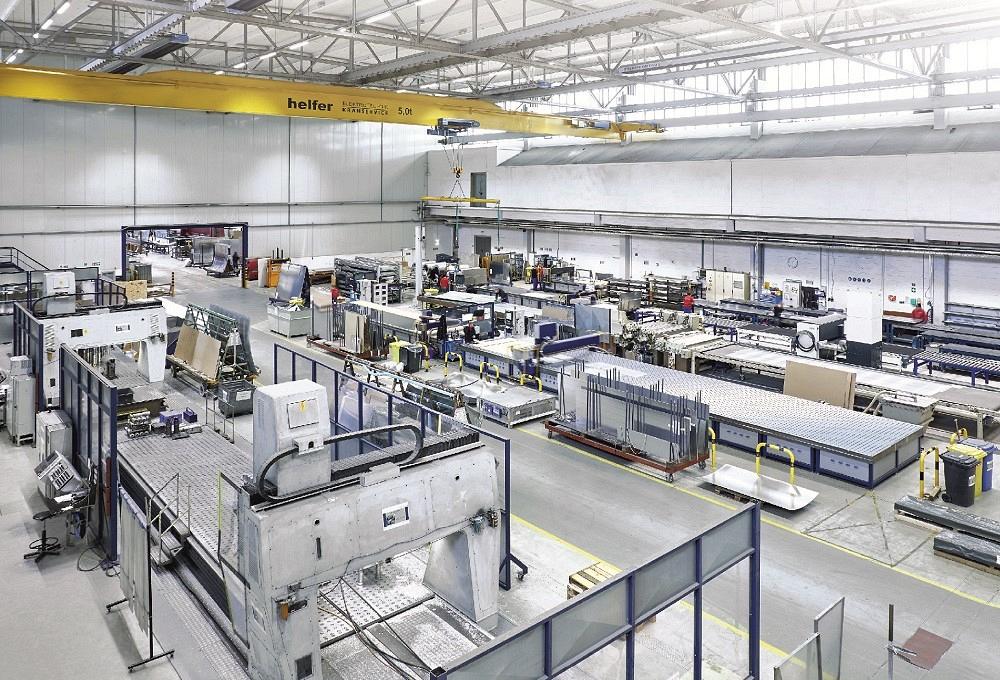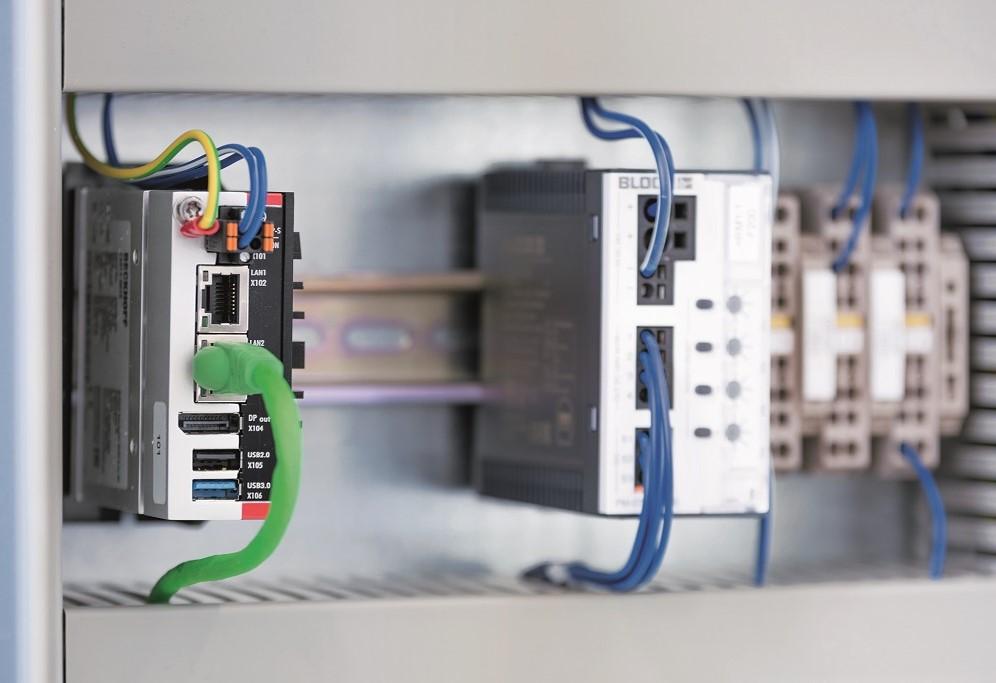Digital Manufacturing Industry Manager
- FMA
- The Fabricator
- FABTECH
- Canadian Metalworking
Categories
- Additive Manufacturing
- Aluminum Welding
- Arc Welding
- Assembly and Joining
- Automation and Robotics
- Bending and Forming
- Consumables
- Cutting and Weld Prep
- Electric Vehicles
- En Español
- Finishing
- Hydroforming
- Laser Cutting
- Laser Welding
- Machining
- Manufacturing Software
- Materials Handling
- Metals/Materials
- Oxyfuel Cutting
- Plasma Cutting
- Power Tools
- Punching and Other Holemaking
- Roll Forming
- Safety
- Sawing
- Shearing
- Shop Management
- Testing and Measuring
- Tube and Pipe Fabrication
- Tube and Pipe Production
- Waterjet Cutting
Industry Directory
Webcasts
Podcasts
FAB 40
Advertise
Subscribe
Account Login
Search
What does the cloud mean for metal fabrication?
Better on-time delivery, part quality, and efficiency for modern fab shops
- By Paxton Shantz
- March 12, 2021
- Article
- Manufacturing Software

Paradoxically, metal fabricators use advanced digital control alongside antiquated data management. The cloud will help eliminate the paradox.
Modern metal fabricators operate under an interesting paradox. The industry is simultaneously saturated with advanced digital control and also constrained by antiquated data management. Manufacturers face increasing pressure to deliver high-quality parts efficiently, on schedule, and with more customization. Many engineers and fab shop managers have identified the Industrial Internet of Things (IIoT) and Industry 4.0 as solutions. But with constant deadlines and machine maintenance, they remain unsure about which is which, where to start, and what any of it means for them.
In many cases the cloud is central to implementation—and the correct place to start. This is because the cloud is the brains of the operation that provides on-demand availability of computer and system resources, especially data storage, without direct active management by the user. In one sense, IIoT forms the pathways of the sensory nervous system: the physical components that provide data and internet access to the cloud. And Industry 4.0 is the complete body known as the smart factory, enabling local mass production down to a lot size of one.
So the question “What does the cloud mean for metal fabrication?” can be rephrased much more powerfully as, “What does unconstrained availability to machine control systems and production data mean?” Relative to the metal fabrication industry, cloud technologies mean a readily available solution exists to improve on-time delivery, quality, and efficiency, and it can be configured and implemented much easier than one might think.
Cloud Migration
Many fabricators embraced cloud computing even before COVID-19, but the pandemic has become an accelerant. For most, the stresses, strains, and experiences of the past year have been enough to remove any remaining reservations about digital transformation and provide motivation to begin the migration. At the same time, new technologies such as additive manufacturing and machines as a service are taking hold, and businesses have started to embrace reshoring and onshoring. Migrating to the cloud, even in a rapidly changing environment, requires relatively little time and capital investment to obtain large benefits in product improvements and business agility.
Metal fabrication always has focused on continuous improvement, so getting started with cloud computing only requires documenting the data that is already known to influence business. The cloud can be used to analyze everything from the front end to the back end of the business. However, migration to the cloud usually begins with the data associated with the machines. Of course, the industry has machines ranging from manual to fully digitized, but all can take advantage of the cloud.
The fully integrated digital machines are rich with data, but many cost-effective, easy-to-integrate solutions exist for semiautomated and manual machines. For example, a manual machine can be outfitted with a power measurement device that will support data collection on the machine idle time, run time, downtime, and tool load.
For machines without connected controls, such as older CNC machines that communicate via only a serial interface, or without any communications at all, such as an older bar loader on a lathe, engineers can easily add a bus coupler or gateway device to transmit data from the I/O level to the cloud.
The Importance of Preprocessing Data
Whether the amount of data to collect is large or small, it is generally good practice to use local logic to preprocess data before transmitting it to the cloud. This strategy lowers data transmission and data storage requirements; that is, it eliminates unnecessary bandwidth use and costs. In addition, local preprocessing allows data unification, which makes it easier to manage and integrate into analytics solutions.
Again, business leaders usually know which metrics are key, but rather than port this information to the cloud, fabricators should take time to break it down, using local software to separate the information into the specific state changes that it represents.
This may seem challenging, but just as there are systems readily available to collect data, there also are systems that support local preprocessing of the data. Cost-effective industrial PCs are excellent universal platforms that also can serve as edge-computing devices. Easy to program and integrate, IPCs that can stand up to the tough production environments in metal fabrication provide an edge hardware platform that can run many software platforms, fitting wide-ranging edge computing implementation strategies.

Industrial PC-based machine controllers can preprocess data before transmitting it to the cloud for additional analytics.
The Importance of Time
Time-stamped data records and basic analytics (including such information as minimum, maximum, and average machine cycle times) will almost immediately improve the ability to make good decisions quickly and optimize the business ROI. But the future is going to reward those who work to create a complete temporal image of their process and production data.
Processing errors are synonymous with missed ship dates and lost profits. Having a complete temporal image of the process and production data will support quick recoveries from faults and failures. It will also support comprehensive condition monitoring, predictive maintenance, pattern recognition, and machine optimization.
These benefits move the discussion past spontaneous troubleshooting to what can be accomplished with 24/7 monitoring of a single machine or a fleet of machines. The path to 24/7 monitoring is relatively simple in this context, because the tools that perform these analytics simply require configuration, not programming, to produce everything from alarms to automatic code generation, either remotely or locally, and to display and share the data on easily configured dashboards.
Cloud-based Analytics Boost Uptime and Efficiency
As cloud engagement advances, the tremendous advantages of increasing machine uptime and efficiency become even more obvious. Again, rather than cloud integration being complex, it offers service tools that are perfect for updating, commissioning, and troubleshooting machines.
Data sent from running machines can be compressed into binary streams to save network bandwidth, then transmitted for analytics processing. The analytics processing steps are built using preconfigured toolbox algorithms and can enable analysis of relevant lifetime, cycle times, tool efficiencies, parts counters, overall equipment effectiveness, and many other key metrics. The outputs from these algorithms can be used as inputs to other algorithms, shared as they are, or passed to higher level systems like enterprise resource planning, machine learning systems, or further cloud analytics tools.
In addition, signal paths can be visualized and analysis results charted to mark significant data points. The data points then can be linked logically to production events to support quick identification of products, processes, or machine inefficiencies from practically any location.
Cloud-based Dashboards Support Data Sharing
The last significant point about what the cloud means to metal fabrication is how to access and share the data and results. While most have become accustomed to looking at machine data natively displayed on a machine or with programming software, the cloud provides much more freedom concerning who is able to view the data and exactly what they are able to view.
Because the ability to access and share that cloud data has so many possibilities, fabricators first should consider the necessary metrics. The goal is to tell a story with each indicator, graph, and visual element on the dashboard. All of these are representations of metrics that have been deemed important. The more metrics shown, the more complete the story. Keeping the story concise and relevant requires only exercising the flexibility of the dashboard-creation software. A well-created dashboard should show useful, actionable information tailored to the audience with access permission.
As with so many other aspects of the cloud, creating the right dashboard may seem daunting, but many cost-effective and easy-to-use tools are available. For example, some platforms integrate web-based (HTML5) dashboards that can be customized for colors, logos, layouts, sort sequences, themes, and languages.
Begin Your Cloud Integration Journey
Machine builder OEMs, small job shops, and large manufacturers alike have already heard many times that they must embrace and integrate cloud technologies. However, many still operate in the traditional paradox of metal fabrication: advanced digital control alongside antiquated data management.
It’s time to change this dynamic. Those who begin the journey will be the first to benefit from less downtime, higher-quality parts, and fewer missed ship dates. Those that do not may have a very difficult time catching up.
About the Author
Paxton Shantz
13130 Dakota Ave.
Savage, MN 55378
952-890-0000
subscribe now

The Fabricator is North America's leading magazine for the metal forming and fabricating industry. The magazine delivers the news, technical articles, and case histories that enable fabricators to do their jobs more efficiently. The Fabricator has served the industry since 1970.
start your free subscription- Stay connected from anywhere

Easily access valuable industry resources now with full access to the digital edition of The Fabricator.

Easily access valuable industry resources now with full access to the digital edition of The Welder.

Easily access valuable industry resources now with full access to the digital edition of The Tube and Pipe Journal.
- Podcasting
- Podcast:
- The Fabricator Podcast
- Published:
- 04/16/2024
- Running Time:
- 63:29
In this episode of The Fabricator Podcast, Caleb Chamberlain, co-founder and CEO of OSH Cut, discusses his company’s...
- Trending Articles
Capturing, recording equipment inspection data for FMEA

Tips for creating sheet metal tubes with perforations

Are two heads better than one in fiber laser cutting?

Supporting the metal fabricating industry through FMA

Omco Solar opens second Alabama manufacturing facility

- Industry Events
16th Annual Safety Conference
- April 30 - May 1, 2024
- Elgin,
Pipe and Tube Conference
- May 21 - 22, 2024
- Omaha, NE
World-Class Roll Forming Workshop
- June 5 - 6, 2024
- Louisville, KY
Advanced Laser Application Workshop
- June 25 - 27, 2024
- Novi, MI



























